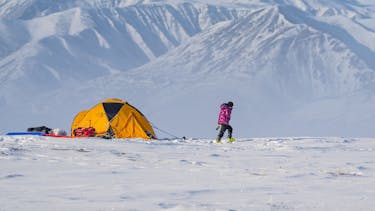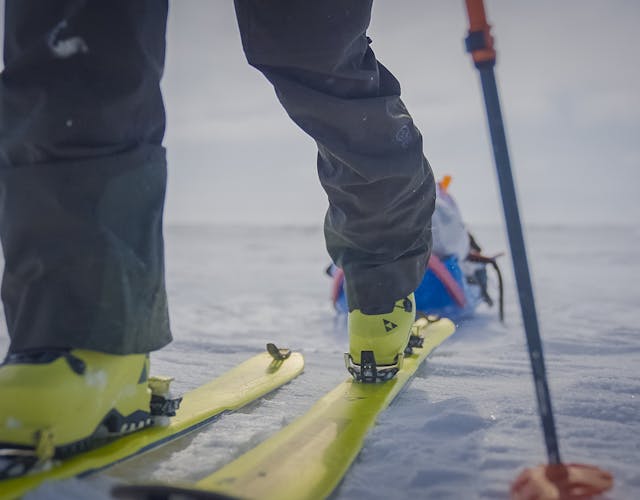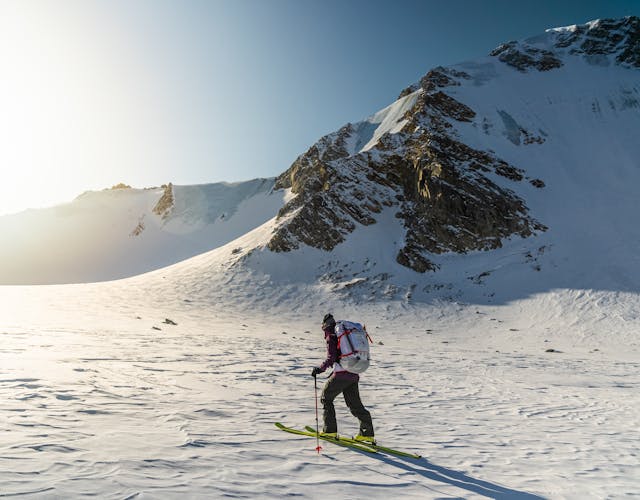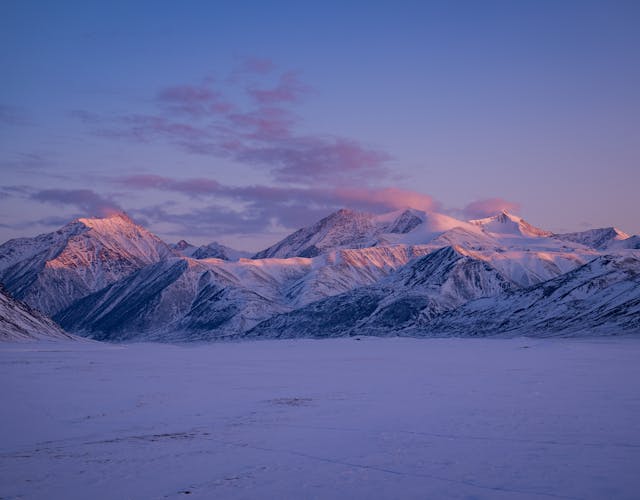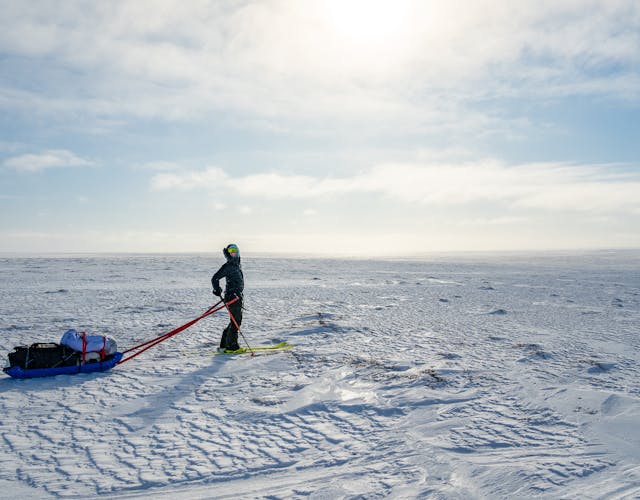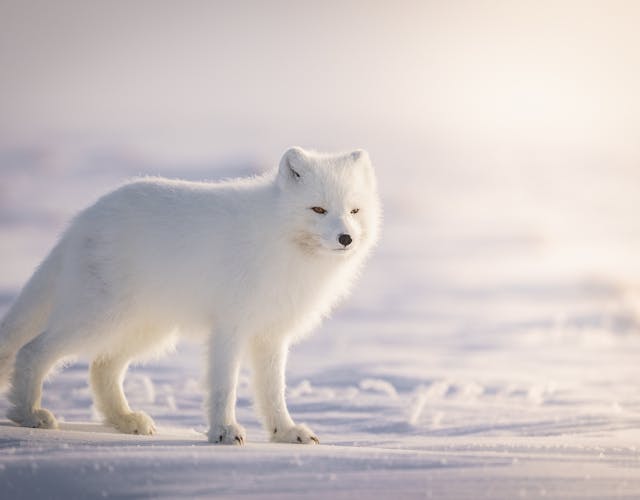
Words by Sophia Schwartz
In April 2022, I joined an expedition headed about as far north as you can go in Alaska into the Arctic Wilderness Refuge. The mission was twofold: Ski Mt. Hubley, an unskied peak in the Brooks Range; then to ski traverse across the entire coastal plain conducting snow science research to hopefully help the fight to protect the Arctic against oil drilling.
The combination of ski mountaineering and citizen science was a mission I was stoked to join! Our team leader was Kit DesLauriers, an absolutely badass ski mountaineer. She assembled a rad team of Jim Morrison, Sarah Carpenter, and myself to join her on the adventure. I was clearly in the rookie role and felt blessed and honored to join such a legendary crew.

Mt. Hubley is the second-highest peak in the remote Brooks Range. Our team was dropped via a bush plane on Okpilak Lake. We then traveled about 7 miles up the river drainage hauling sled to our base camp. The next morning, we ditched the sleds and overstuffed our packs to follow a steep and narrow canyon to the base of Mt. Hubley. We snuggled into our tents for a short night of rest before summit day. The early morning was crisp and cold. We skinned up the glacier and transitioned to crampons at the base of the couloir. The climb to the summit was firm and sustained.

The view was stunning as Mt. Hubley looked out over an endless sea of mountains. Blue ice coated the peak directly across, and I felt lucky we at least had snow (be it rather frozen solid) to ski back down. Truth be told, I love smooth icy snow. My Fischer Transalp ski edges were just powerful enough to bite into the snow and make me feel secure. Hop turns through no fall zone connect me to the mountain. I’m fully present, humbled in the moment. The team was all smiles as we descended back down. Three inches of snow blanketed the glacier and the mellow terrain had us giggling as we slide back down to base camp. We soaked it in knowing the next part of the trip would involve a lot of flat touring.

Mt. Hubley and the surrounding areas didn’t have much snow. The negative 40 degree temps and dry climate created harsh winter conditions but not endless feet of powder. While there was enough snow to slide on up high, down low we traversed back to Okpilak Lake over rocks and melted-out patches of ground. For many, the lack of snow would be a reason to travel elsewhere. However, for us, it was the reason we were here.

The land management regulators have deemed an average of nine inches (22 centimeters) of snow necessary for industrial machines to travel across the tundra to protect the ground underneath. In the Arctic Refuge, this means machines used for oil extraction. In 2017, the tax break bill opened up the Arctic refuge to drilling and mandated lease sales of the land to oil corporations.
On Kit’s previous trips to the refuge, she noticed a minimal amount of snow in the area. We returned to scientifically validate what she had seen. Our hope was the impact of the data could rule out industry machine travel and protect the land.

To collect data, we hauled our sleds 55 miles across the flat tundra all the way to the Beaufort Sea. We stopped every 7 miles and dug a pit, probed snow depth, and analyzed the snowpack. Our measurement helped add data points from some remote zones for climate researchers doing the same work.
The days were long and hard: Wake up and convince yourself that you really do have to get out of your warm sleeping bag. Go get the bear bags that held breakfast (oh yeah… check for polar bears first), and fire up the stoves. Break down camp and pack up the sleds. Get moving and cover ground so your toes come back to life. Find a snow science site and spend the next few hours digging, probing, and measuring in the whipping wind. Keep moving, set up camp, eat, lather, rinse and repeat.

The hard work was well worth it. The reciprocity of enjoying the mountains and working to protect them outshined any summit. The magic of the Arctic is in the caribou tracks, the ice rivers, and the quiet silence. It is the moments with laughing with teammates.
Our role was a small one- standing on the shoulders of the Gwich'in who call this land home and are the true champions of the land. We showed up as we could but have to honor so many others who are leading this fight. It will take all of us working together whether out skiing on the coastal plains or at the ballot box!
